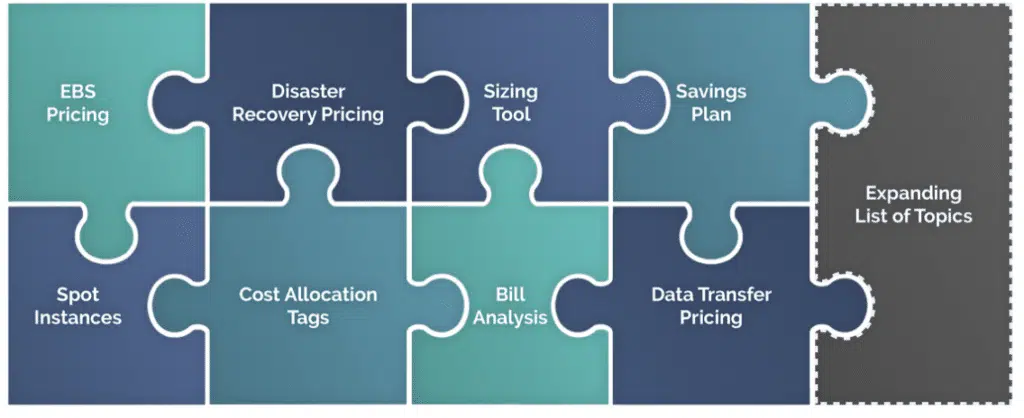A DevOps Guide to AWS Cost Optimization
Introduction
This guide contains a series of advanced cost-optimization techniques that can lower your AWS bill without compromising application performance or redundancy preparedness for disaster prevention. These articles are written for AWS Administrators and cloud engineering managers wanting to gain a deeper understanding of lesser-known aspects of AWS pricing.
Have questions about other cost-optimization methods or AWS Services? Send us a request! CloudBolt adds chapters to this guide regularly as best practices and AWS products evolve.

The Basics of AWS Cost Optimization
At its most basic level, cloud cost optimization is a method of practice that should be broken down into the following cycle:
- Build asset awareness through inventory analysis, tagging, and tracking. Make sure you understand not only what resources you have, but also their relationships with one another and the applications they support.
- Collect key metric data to set benchmarks for month-to-month and year-to-year trend analysis. This enables you to forecast budgetary needs confidently due to the cataloging achieved in step 1.
- Refresh your knowledge of available services, resources, and discount programs.
- Execute a data-driven purchasing strategy that applies all previous steps. This plan should factor in right-sizing resources, analyzing existing commitments for utilization and efficacy, upgrading to relevant instance generations, and validating new commitments against a 1- or 3- year horizon.
The following sections focus on phase 3 of the cost-optimization cycle and assume that you already have a cataloged infrastructure with historical cost and usage data.
Chapters
There’s a lot of ground to cover regarding AWS services, pricing models, pitfalls, and best practices. Feel free to jump around to chapters you feel more comfortable tackling first. Remember, every organization has different needs. You can apply the cost-optimization cycle to different dimensions (data-flow routing, storage cleanup, commitment analysis, etc.) at different times to prevent concentrated (read: stressful) resource-management cliffs.
Related Blogs

The End of Manual Optimization: Why We Acquired StormForge
Today is a big day for CloudBolt—we’ve officially announced our acquisition of StormForge. This marks a major milestone for us…
